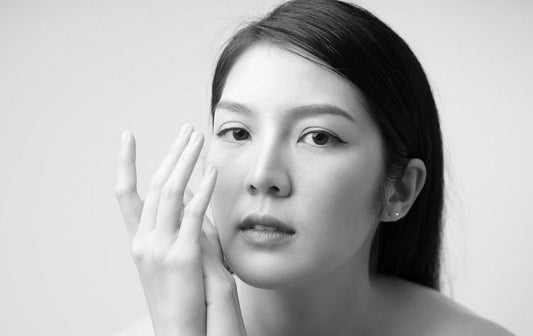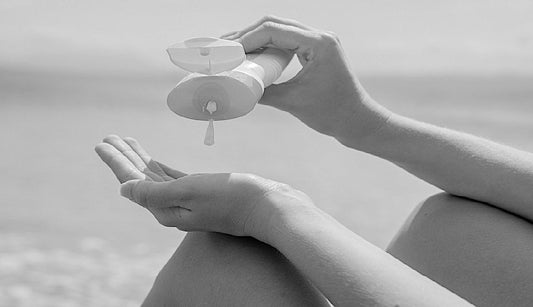
Thinks you need to know about toxic makeup
Toxic makeup is nothing new: The ancient Greeks used heavy metals on their skin, and Egyptian queens wore black kohl eye makeup that was made with lead. Cancer-causing toxins were just found in foundation and sparkly makeup — here are 11 chemicals that could lurk in your lipstick, lotion, and eye powder. Last week, trace amounts of asbestos — a known cancer causer — were found in concealer as well as sparkly makeup marketed to kids at Claire's, a reminder that toxic chemicals and compounds still lurk in beauty products. In March, Claire's also voluntarily recalled some of its eye shadow and face powder after asbestos was found in those products as well. The issue isn't limited to cosmetics: The FDA recently warned about dangerous bacteria in a no-rinse cleansing foam used by hospital patients, alerted tattoo artists about ink contaminated with microorganisms, and found yeast in Young Living essential oils. In part, these problems arise because US beauty products are largely unregulated. "The law does not require cosmetic products and ingredients, other than color additives, to have FDA approval before they go on the market," the US Food and Drug Administration (FDA) notes. Some toxic ingredients (like asbestos) are inadvertently added during the manufacturing process, while product makers put others in purposefully to help with absorption, shine, shimmer, or a non-greasy feel. Studies suggest that chemicals from the products people put on their faces and bodies can show up later in urine. Certain compounds, especially when mixed together in the body, might up a person's odds of developing cancer or mess with their reproductive ability. But it's nearly impossible for consumers to determine what's in cosmetics even by reading the labels, since many compounds can be considered trade secrets and hide in the "parfum" or "fragrance" ingredients on a list. Alec Batis, a former research chemist who once made hair dyes for the L'Oreal group, is an expert in the risks and benefits of chemicals used in beauty products. Batis, who now works as a paid consultant for beauty companies and recently appeared in a documentary called "Toxic Beauty," told Business Insider that people should be concerned about some chemicals in products like soap, shampoo, and perfume. But not every formulation is dangerous. "It's not about hating chemicals," Batis said. "Let's understand what this stuff really is." Here's a look at 11 problematic ingredients that are near-universal bathroom vanity staples:
Phthalates used to be almost ubiquitous in cosmetics, and they're still in many fragrances today. Studies link the plasticizers to reproductive and development issues. Phthalates help make plastics durable and flexible. They're used in raincoats, flooring, hair spray, nail polish, perfume, lotion, shampoo, aftershave, food packaging, and toys, among many other items. When it comes to makeup, the FDA says on its website that diethylphthalate (DEP) is "the only phthalate still commonly used in cosmetics." At least one phthalate can cause cancer, according to the National Institutes of Health. There's also evidence that the chemicals can also mess with reproduction and child development. Batis said he'll wear some fragrance when he goes out, but he washes it off before bed. "We don't know the long term effects, and we have to be smart about it," he said. Parabens are also common in shampoo, shaving cream, moisturizers, and other makeup. The chemicals are meant to prevent mold and bacterial growth, but it's not clear yet how they impact human health at low levels. Many cosmetic makers have switched to "paraben-free" formulations, but Batis said that doesn't mean they're better. "They switch to other [preservatives], for example, methylchloroisothiazolinone and its sister compounds," he said. "And I'm thinking, 'Wow. You're switching to that, which is a known sensitizing allergen.'" Frequent use of sensitizing allergens like methylchloroisothiazolinone can cause lesions and a scaly red rash in some people. A chemical called 1,4 dioxane is not purposefully put in cosmetics, but it can show up as part of the makeup manufacturing process, and it is dangerous. According to the FDA, 1,4 dioxane "is a potential human carcinogen." It sometimes shows up in beauty products that contain detergents, foams, stabilizers or solvents. The FDA recommends that manufacturers use a vacuum technique so that the cancer-linked byproduct can be avoided. Batis agrees. "The manufacturing process should be standardized to vacuum," he said. "There's so many simple solves for some of these things." Talc and asbestos are commonly found in makeup in trace amounts. Asbestos, a known cancer-causer, was found in makeup sold at Claire's twice this year. "It wasn't surprising to me, because there's no regulation," Dr. Shruthi Mahalingaiah, a gynecologist at Boston Medical Center, said at the time. Coal tar dyes are sometimes in eyeshadow and hair color because they're great at tinting. Coal tar dyes can irritate the skin, and in severe cases, make people go blind. "There are no color additives approved by FDA for permanent dyeing or tinting of eyelashes and eyebrows," the FDA says in its warning on eye cosmetic safety. Most coal tar hair dyes today are made with petroleum, but they can still cause harm. The FDA suggests keeping hair dye away from your eyes, and says "do not dye your eyebrows or eyelashes." Nail hardeners and nail polishes can include formaldehyde, and some hair-smoothing products release formaldehyde gas into the air when heated. The International Agency for Research on Cancer classifies formaldehyde as a human carcinogen. For this reason, the Occupational Safety and Health Administration (OSHA) advises hair salons to make sure they have adequate ventilation and perhaps even give employees respirators. "Beauty care companies are now making and selling products that they claim do not contain formaldehyde in the solution," OSHA says on its website. "Choosing one of these products might eliminate the risk of formaldehyde exposure. Note that just because a product doesn't list formaldehyde, formalin, or methylene glycol does not mean that it does not contain any other hazardous ingredients." Triclosan is another ingredient meant to prevent bacterial growth. It's in some toothpastes, antibacterial soaps, and body washes. Scientists are still learning about triclosan, but some evidence suggests it can mess with our thyroid hormone, which regulates metabolism and helps humans grow and develop. There are also some indications that triclosan might make bacteria more resistant to antibiotics, but more research is still needed. Lead is sometimes found in trace amounts in lipstick, and it's also in certain traditional eyeliners. Traditional eyeliners such as kohl, kajal, al-kahal, surma, tiro, tozali, and kwalli contain "high levels of lead" and other heavy metals according to the FDA, and should not be used. Those products are typically not for sale in the US, but the FDA cautions that they "sometimes make their way into specialty markets in this country." Lead is a neurotoxin that cause brain damage and subtly lower IQs. "In children, there is no identified threshold or 'safe' blood lead level," according to the US Centers for Disease Control (CDC). PEG (polyethylene glycol) compounds are petroleum-based and used to make cosmetics absorb more quickly into the skin. "They enhance penetration," Batis said. If producers and consumers were to shift their expectations about what beauty products should do, he added, "then we can formulate really beautiful things that don't have to absorb in 2 seconds flat and we don't have to use certain chemicals in order to do that." Sulfates — harsh soaps that are common shampoo ingredients — have developed a bad reputation. But they're not problematic for everyone. Sulfates are a type of surfactant — essentially a super-powerful soap. That can be a problem if you want to keep color-treated hair looking good for a while. "People pay a lot of money to stick those color molecules in the cortex," Batis said. "So, after they leave the salon, I don't want them using a sulfate shampoo because they're going to wash that $400 out in 5 seconds." Sulfates are harsh and can make scalps dry. But Batis wouldn't tell everyone to shy away from them. "Sulfate shampoos are good for fine, normal hair," he said. "Cause it really rocks up the cuticle, and you get amazing volume." Butylated hydroxyanisole (BHA) and butylated hydroxytoluene (BHT) are preservatives often used in lipsticks and moisturizers. The US Department of Health and Human Services says BHA is "reasonably anticipated to be a human carcinogen," given what it does to animals. BHT may be safer for people than BHA, but it's hard to know for sure because very few studies have been done. Both chemicals are often put on or in our mouths: In addition to being common lipstick additives, they're used to keep processed foods like chips and vegetable oils from going rancid. "Do we need products to last 20 years?" Batis asked. In general, we know very little about what exactly is in cosmetics. The US law that regulates cosmetics — the Federal Food, Drug, and Cosmetic Act — hasn't been changed since it was enacted in 1938. While Europe has banned over 1,300 chemicals from products sold there, the US forbids just 11. Congress wrote drafts of new cosmetic rules in 2011 and 2018, but so far nothing has been enacted. Batis believes that the beauty industry needs more regulation and unbiased third-party testing. In the absence of that, "it's like a cat and mouse game," he said. "Corporate is putting the pressure on marketers to increase sales, and marketers are putting the pressure on chemists to just come up with the next thing." Instead, he said he hopes to see the industry focus more on balancing safety and beauty concerns. "It's more than just what people should buy, what people shouldn't buy," Batis said. "It's about respect for other human beings." But avoiding chemicals altogether isn't a good solution to the problem. Studies suggest that some manufactured chemicals are "sensitizing allergens," meaning they can prompt people to develop new allergies to certain makeups, creams, or perfumes they use repeatedly over time. But just because something is "all-natural" or plant-based doesn't mean it's better. Natural labels don't mean much in the first place, but more importantly, people react to all kinds of compounds — natural or not — in different ways. Take chamomile, for instance: some people are fatally allergic to the plant, which is a ragweed relative. "Just be aware of certain things, because everyone's different," Batis said. He believes no one is innocent in the beauty market: Companies could be more transparent about what's in their products, regulators should insist on third-party testing, and consumers may need to manage their expectations about what beauty products can reasonably do. "I don't believe in the super duper crazy miracle," Batis said. "I believe that there's a great way to nourish the largest organ of your body." (By Hilary Brueck from Businessinsider.com)
WHAT TO
READ NEXT
STAY IN
TOUCH
Sign Up and be among the first to learn about new mìsula announcements and products.
- Choosing a selection results in a full page refresh.
- Opens in a new window.












